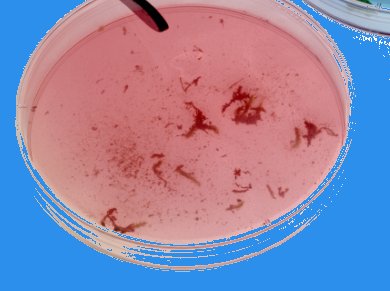Living Together
We and all other organisms must constantly grapple with bacteria. Whether for a necessary symbiosis or an infection, carbohydrate structures on cell surfaces play an important role in the interactions between bacteria and organisms. A team led by Antonio Molinaro at the University of Naples and Christian Hertweck at the Leibniz Institute for Natural Product Research and Infection Biology in Jena have now discovered an unusual carbohydrate structure without which the symbiosis between a bacterium and a fungus that affects rice plants is not stable. As the researchers report in the journal Angewandte Chemie, the bacterium probably requires this structure as camouflage for protection against the defense mechanisms of the fungus.
In gram-negative bacteria, lipopolysaccharide (LPS) carbohydrate structures are especially important for cell–cell interactions. LPS consists of a complex chain made of various saccharide molecules and a lipid that anchors the structure in the cell membrane. “Previous studies were limited to the role of LPS in the interaction of bacteria with animals or plants,” says Hertweck. “There is thus a sizeable knowledge gap with respect to interaction with other microbes.” The team has now examined a singular symbiosis: The fungus Rhizopus microsporus, which causes rice blight, inhibits root growth in rice plants, causing the plants to die. To achieve this, the fungus needs a partner—the bacterium Burkholderia rhizoxinica. The bacteria produce toxins needed by the fungus to damage the rice plants. The nutrients released by the dead plants are then used by both symbiotic partners.
Unusual Polysaccharide
“Until now the mechanism that allows the bacteria to survive within the fungal cells has remained a mystery,” says Hertweck. Now the team seems to be on the heels of a solution. “We have found an unusual polysaccharide, a chain of several galactose molecules, in the LPS of the bacterium,” says Herweck. “This pattern has not been seen before in this class of bacteria; however similar structures often occur in fungi.” The bacterium possibly mimics these structural elements of its host organism. The researchers infected fungi with mutated bacteria that did not contain these polysaccharides. In this case, the partners are not able establish a stable symbiosis. This becomes evident when the fungi are no longer able to produce spores.
“The special galactose sequence probably acts as a disguise for the bacterium,” opines Hertweck. “It is possible that it is thus not recognized as foreign, which keeps it safe from the defense mechanism of the fungus.”
- An Unusual Galactofuranose Lipopolysaccharide That Ensures the Intracellular Survival of Toxin-Producing Bacteria in Their Fungal Host
M. R. Leone, G. Lackner, A. Silipo, R. Lanzetta, A. Molinaro, C. Hertweck,
Angew. Chem. Int. Ed. 2010, 49.
DOI: 10.1002/anie.201003301 - M. R. Leone, G. Lackner, A. Silipo, R. Lanzetta, A. Molinaro, C. Hertweck,
Angew. Chem. 2010, 122.
DOI: 10.1002/ange.201003301




